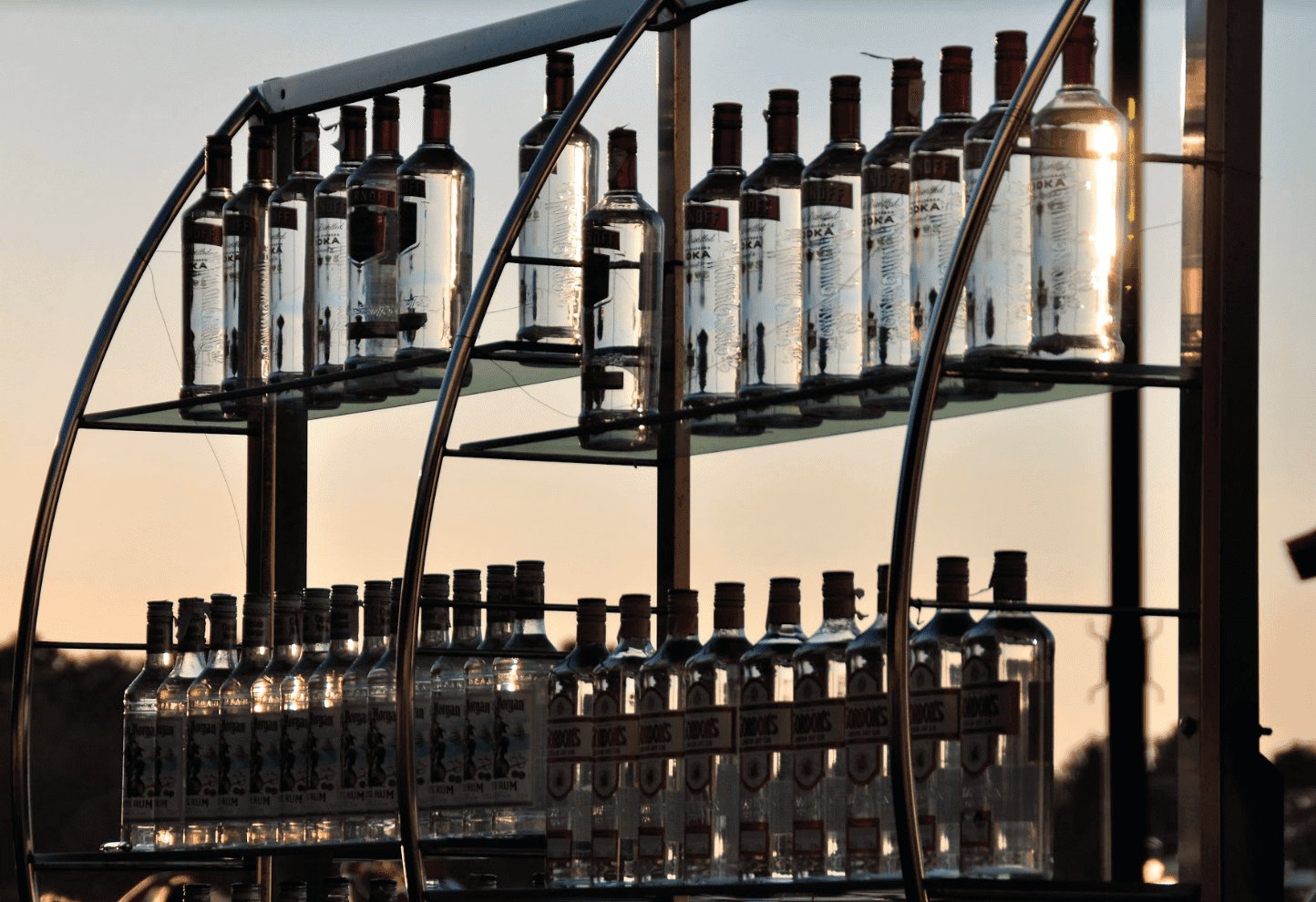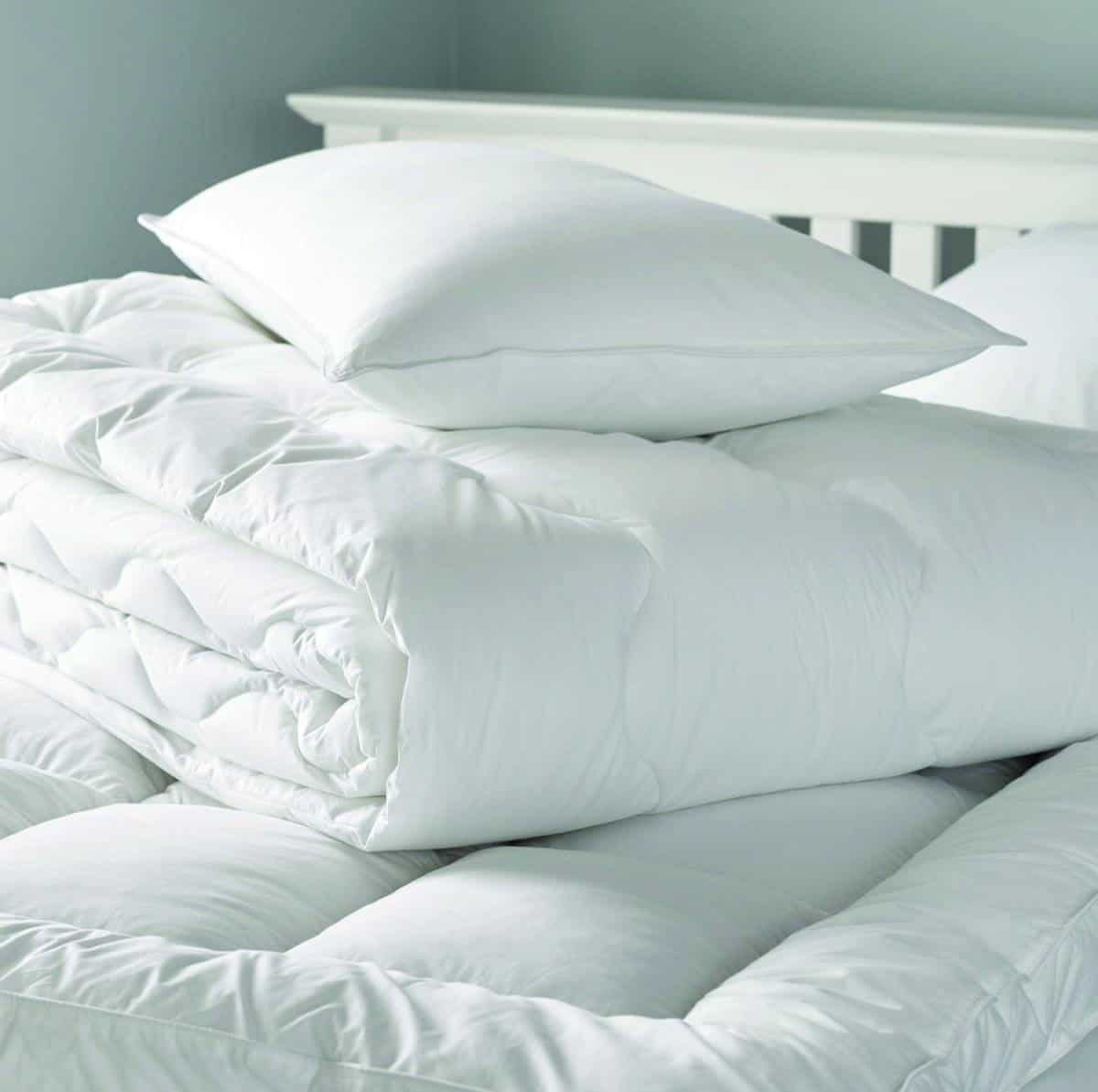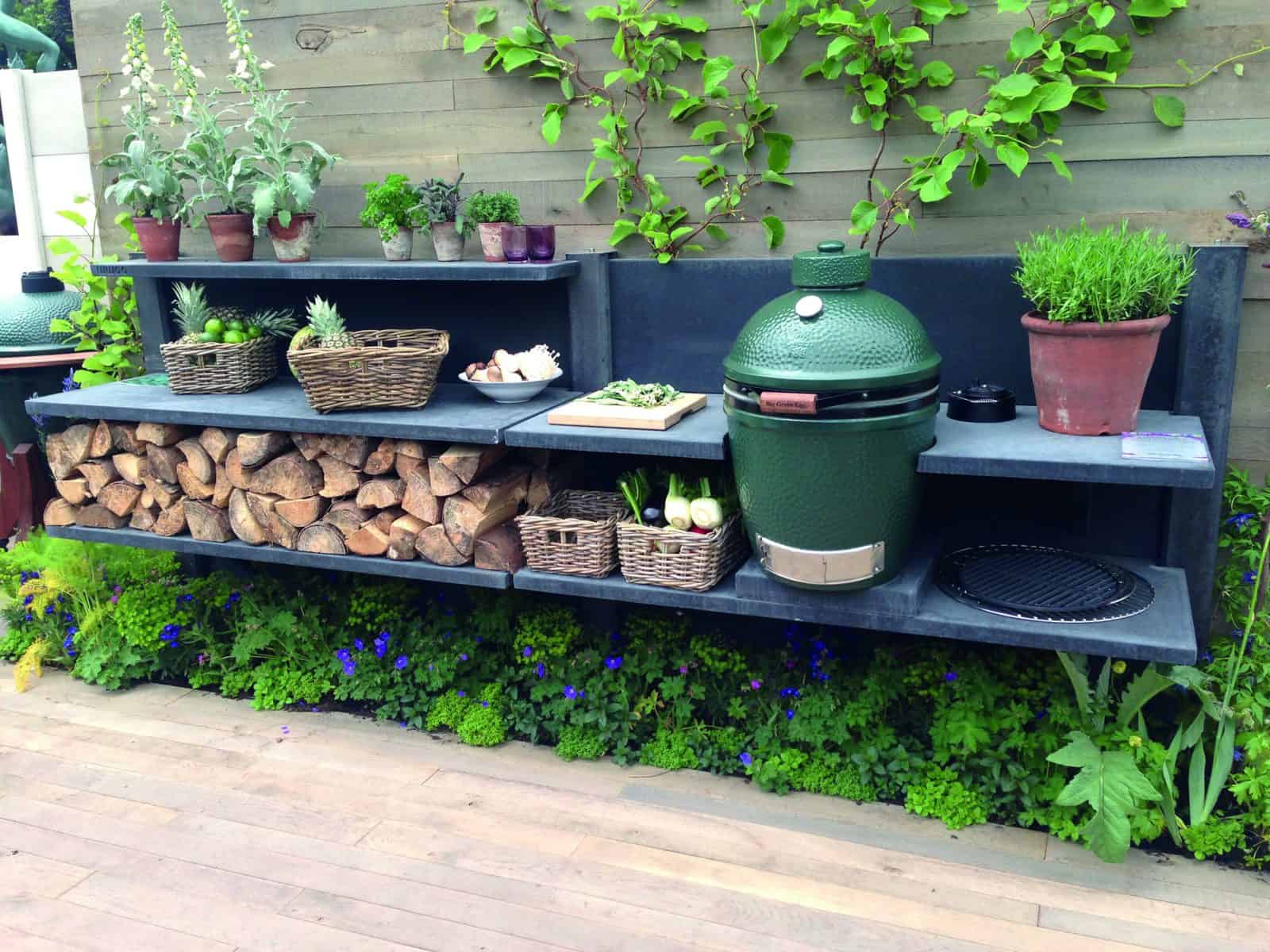
In Good Spirits: Time for a Vodka Revolution?
Craft distilleries are fuelling a gin boom, but is vodka – still the UK’s favourite spirit – next in line for a renaissance?
Many traditional guest houses, with their emphasis on home-from-home hospitality and top-quality food and drink with a local slant, have participated with gusto in the gin boom of recent years. The enduring popularity of local ingredients has bolstered the growing popularity of craft gin at the bar of a premium bed & breakfast, and the owners of these hospitality businesses in most British regions are able to offer a gin with local botanicals, from Douglas Fir in the Cairngorms to Yorkshire lavender and Cornish samphire.
Vodka producers are doing their best to step up to the mark, sometimes from unexpected or non-traditional sources. The brewer and wine merchant Adnams, for instance, itself a beneficiary of the gin boom, offers no fewer than four vodkas distilled from grains produced near its headquarters in Suffolk. These include a peppery rye variety and an amber vodka made with barley, wheat and oats, aged in oak barrels and offering tones of vanilla, white chocolate and coconut.
If the tasting characteristics of East Anglian grains sound arcane, West Dorset producer Black Cow offers the world’s only vodka made purely from milk, conferring a “unique creamy character”, while other small-batch producers offer a seemingly limitless range of flavoured varieties covering the spectrum of the human palate, from tea to toffee. The distillers Blackdown in Sussex even offer a vodka made with sap from the silver birch tree which has, we are assured, a “a delicate sweetness”.
Some of the following winds propelling the gin market also apply to vodka. Indeed, vodka was in at the beginning of the small-batch revolution when William Chase, the Herefordshire farmer behind Tyrells crisps, obtained a distilling license in 2008, overturning the previous ban on new stills below a massive 18 hectolitres in size.
Winning gold at the San Francisco World Spirits Competition a mere two years later, Chase has since increased his offering to encompass a new vodka made from local cider apples and flavoured varieties including marmalade, rhubarb and a smoked version.
So, the vodka revolution is upon us? Not quite.
Mark Reynolds, founder of the Three Cheers Pub Company in South London, which operates the only boutique hotel in Kensington, Tommyfield, remains unconvinced.
“At the moment, gin is holding all the cards,” he says. “People who buy gin are interested in botanicals and provenance, but with vodka it is more about brand. They want to buy into the image,” he says.
While the vodka brands are trying to change this, not least with their inventive approach to ingredients, Reynolds is unsure of customer demand: “I think the consumer is still some way behind this.”
Flavoured vodkas have given way to gin in recent years, with drinkers preferring the subtle impact on flavour of the botanicals added to distilling vessels. For those interested in process, this is a more enticing prospect than drinks in which the flavour has simply been added to the spirit.
Aficionados say you can get wonderful vodkas, but they often argue that it is harder to get that distinctive feel from the distilling process associated with gin, and that taking a neutral spirit and adding a flavour is not the same thing.
Small-batch craft producers are of course only part of the story for the on-trade in spirits – even if they punch above their weight with the clientèle serviced by the hospitality market of bed & breakfast properties, inns and guesthouses – and the headline numbers show that vodka retains its hegemony by a massive margin.
Smirnoff Red remains the nation’s favourite spirit, accounting for 10.7% of combined UK on and off-trade sales in 2016, according to the market intelligence publisher Euromonitor International, while the Wine and Spirit Trade Association’s figures shows that on-trade gin sales were less than a third of vodka sales last year.
At first glance, this bears out the optimism of many producers. For instance, Black Cow Vodka’s global marketing director Kate Harrison insists that vodka – dominated as it is by well-resourced multinationals – is faring very well amid the gin boom.
“The spirits market is focused on delivering heritage, authenticity and provenance stories for consumers,” she says, suggesting that some of the trends to have benefited the gin market also apply to vodka.
But comparing 2016 numbers with those of the previous year tells a slightly different story. Vodka sales were largely static year on year, with volume down by 1% and value up by 1%, while gin saw a volume increase of 12% and a 17% increase in value. Should these indications of relative performance become an established trend, it would take more than 14 years for on-trade gin sales to overtake those of vodka in the UK.
This, of course, is a long way off, and is based on the major assumption that the gin boom is only gathering steam. But clearly the momentum, currently, is not with vodka, and the big differential with gin is the craft explosion.
“Vodka isn’t keeping up”
Fashion offers a partial explanation, says Bertie Dulis, co-licensee of the Shears Inn near Marlborough in Wiltshire, a busy countryside property.
“A shot of vodka used to be trendy, but it’s just not anymore,” he says. “There are just so many gins now, and with premium tonics like fever tree also available, vodka isn’t keeping up.”
In his bar Dulis keeps 12 gins and three vodkas – one standard, one premium and one flavoured with vanilla. As the Shears focuses on food rather than casual drinkers, consumption tends to be based on quality rather than quantity, and he sells most vodka as a base for cocktails such as classic and espresso martinis. Premium vodkas have little resonance with his clientèle.
A place for new entrants
The more traditional end of the market may have to wait for a shift in fashion, but Black Cow Vodka’s Kate Harrison is certain that there is a place for new entrants to make an impact on the on-trade.
How, though, can new entrants compete with both the market behemoths in vodka and the small-batch gin wizards?
Harrison is clear: “By producing a fantastic liquid! Black Cow Vodka makes a beautiful martini – and pubs are drawn to the liquid first.”
She also believes in a deeper commercial symbiosis than the simple one between buyer and seller: Black Cow profiles pubs and bars, giving exposure to individual bartenders and the creations they have developed with the vodka.
Another British vodka producer to have won gold in the San Francisco World Spirits Awards, Black Cow is very much in the premium category. That can help with using distribution as a brand awareness strategy.
“Distribution is another way for small producers to differentiate from large brand owners – Black Cow is sold in the best bars in our focus markets,” says Harrison.
Premium appeal
That approach – depicting Black Cow as a premium, local brand with an international reputation – gives it a mass-market appeal without diluting its attraction to guesthouse owners such as the Weary Ploughman’s James Pidgeon. He keeps it with a Ukrainian wheat vodka, which he presents to interested customers as a comparison.
The Weary Ploughman also offers Smirnoff, but some bar managers are so persuaded of the appeal of premium brands that they offer them exclusively.
Premium and super-premium vodkas accounted for 10.3% of sales in 2011, rising to only 13% over the following five years. The bigger move has been from economy vodkas to mid-priced alternatives: the latter now accounts for half of all sales, a seven percentage-point increase from 2011, while economy purchases have dipped by nine percentage points exactly, to a 35.6% market share last year.
Gin is still the on-trade’s big change story, but a market clearly exists for landlords who wish to participate in vodka’s answer to the juniper boom. Premium brands certainly have a part to play, especially those offering local appeal, while a creative approach has rewards for those willing to experiment with cocktails and recipes.
Perhaps the biggest challenge is overcoming what one guesthouse owner, who asked not to be named, describes as vodka’s image problem.
“It’s what people drink when they want to get drunk quickly,” he says. “Especially people who don’t like the taste of alcohol very much. Once you get them trying some different vodkas with they see there are distinct taste differences between varieties, but there’s huge resistance to sitting down and giving a few a try.”
Vodka cocktails
Vodka and gin may appear to be competing neck and neck for the nation’s favourite spirit but the popularity of the vodka martini – made famous by 007 in the James Bond films – is on the rise.
A traditional vodka martini is made as follows:
Ingredients:
15ml vermouth
60ml potato vodka
Twist of lemon peel to garnish
Method:
Pour the vermouth and vodka into a mixing glass and fill with ice cubes. Stir well, then strain into a small Martini glass.
The vesper Martini as described by James Bond author Ian Fleming in Casino Royale:
Ingredients:
Three measures of Gordon’s gin
One measure of vodka
Half a measure of vermouth
Method:
Shake it until it is ice-cold then add a large, thin slice of lemon peel
After Champagne, the Vodka Martini is the drink most consumed by Bond in the films – on more than 20 occasions. However, in the books the drink is outnumbered by Scotch & soda.
Cornish twist
Boutique hotel The Beach in the small northern Cornwall seaside resort of Bude offers a variety of vodka cocktails:
- Aval Dor Cornish vodka, Bonne Maman blackberry preserve, Monin ginger syrup, lime juice, and Cornish Orchards Nigerian ginger beer.
- Vanilla vodka, Kahlua, Bailey’s Crème and a shot of espresso.
- Absolut vanilla vodka, Passoa, passionfruit puree, Monin vanilla syrup and lime juice.
Thanksgiving Special
- 120ml brown sugar
- ½ tsp cinnamon
- ½ tsp ground ginger
- 1/tsp ground allspice
- ½ tsp ground cloves
- 2 tablespoons granulated sugar
- 2 cups half-and-half
- 2 tablespoons pumpkin puree
- 1/2 teaspoon vanilla extract
- Ice cubes
- 120ml vanilla vodka
- 1l sparkling water
In a small saucepan over medium heat, combine the brown sugar, half the spices and 120ml water. Stir until the sugar is dissolved and bring it to a boil. Remove from heat and cool for 30 minutes.
Mix together the granulated sugar and remaining spice and place on a shallow plate. Pour two tablespoons of the syrup onto a plate. Dip the rims of 4 martini glasses into the syrup, and then in the spiced sugar. Set aside.
In a large measuring cup, combine the half-and-half, spice puree, vanilla, and half the simple syrup and whisk until well blended. Pour in to a pitcher filled with ice. If using the vodka, add it to the pitcher before serving and stir. Pour into the prepared glasses. Top with sparkling water.
BOX
Belvedere Bond
Three years ago the makers of the most recent James Bond film, Spectre, signed a multi-million dollar deal with premium vodka Belvedere, which is produced in Poland and is now owned by European multinational luxury goods conglomerate LVMH.
Its owners lay claim to it being the world’s first luxury vodka, and it is the only vodka brand to be awarded the Positive Luxury Butterfly Mark in recognition of its commitment to quality craftsmanship, positive brand values and environmental responsibility. This trust mark and seal helps guests to identify it as a brand that cares about the environment, according to LVMH. Indeed the supplier pledges that 50% of profits from the sale of Belvedere Red Limited Edition bottles have been sent to fight HIV and AIDS in Africa.



